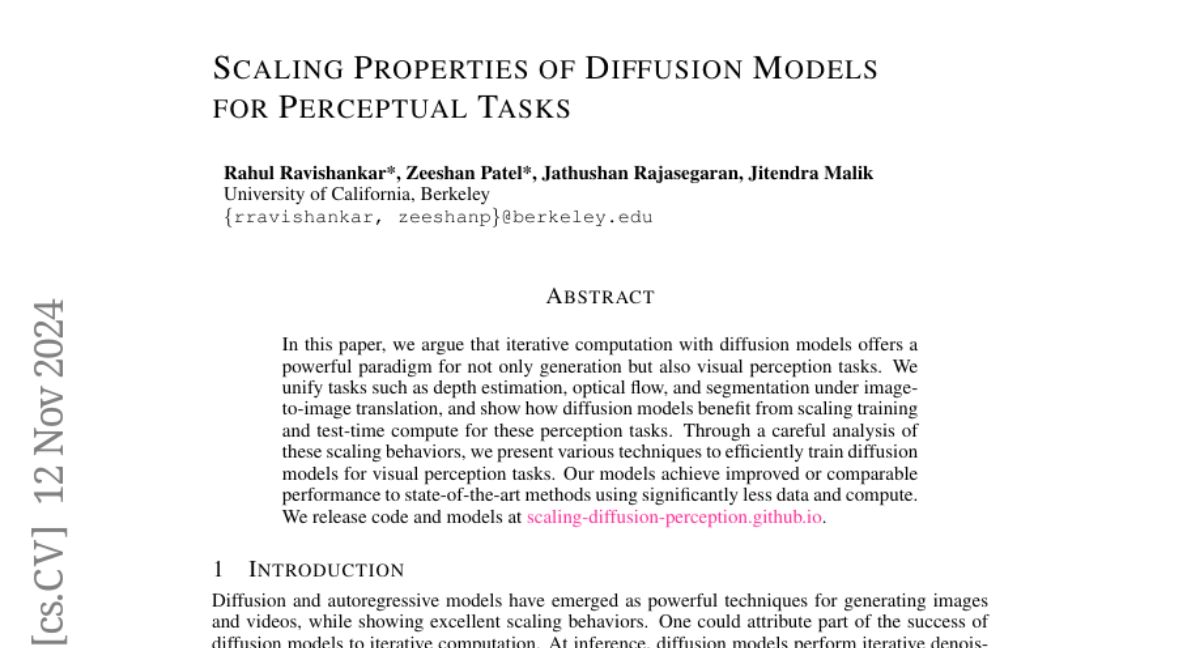Scaling Properties of Diffusion Models for Perceptual Tasks
Rahul Ravishankar, Zeeshan Patel, Jathushan Rajasegaran, Jitendra Malik
2024-11-13

Summary
This paper talks about how diffusion models, which are typically used for generating images, can also be applied to tasks that require understanding images, like estimating depth or segmenting objects. The authors explore how to improve these models' performance by scaling their training and testing processes.
What's the problem?
The main problem is that while diffusion models are great for generating images, they haven't been effectively used for understanding visual information. Tasks like depth estimation and segmentation require different approaches than what these models were originally designed for, making it challenging to apply them in practical scenarios.
What's the solution?
To solve this issue, the authors propose using a unified framework that allows diffusion models to handle various visual perception tasks. They show that by scaling the training and testing processes of these models, they can achieve better results with less data and computational power. The paper presents techniques for efficiently training these models and demonstrates their effectiveness through experiments on several perception tasks.
Why it matters?
This research is important because it expands the capabilities of diffusion models beyond just generating images. By enabling these models to perform complex visual understanding tasks, it could lead to advancements in fields like computer vision, robotics, and artificial intelligence, where understanding images accurately is crucial.
Abstract
In this paper, we argue that iterative computation with diffusion models offers a powerful paradigm for not only generation but also visual perception tasks. We unify tasks such as depth estimation, optical flow, and segmentation under image-to-image translation, and show how diffusion models benefit from scaling training and test-time compute for these perception tasks. Through a careful analysis of these scaling behaviors, we present various techniques to efficiently train diffusion models for visual perception tasks. Our models achieve improved or comparable performance to state-of-the-art methods using significantly less data and compute. To use our code and models, see https://scaling-diffusion-perception.github.io .